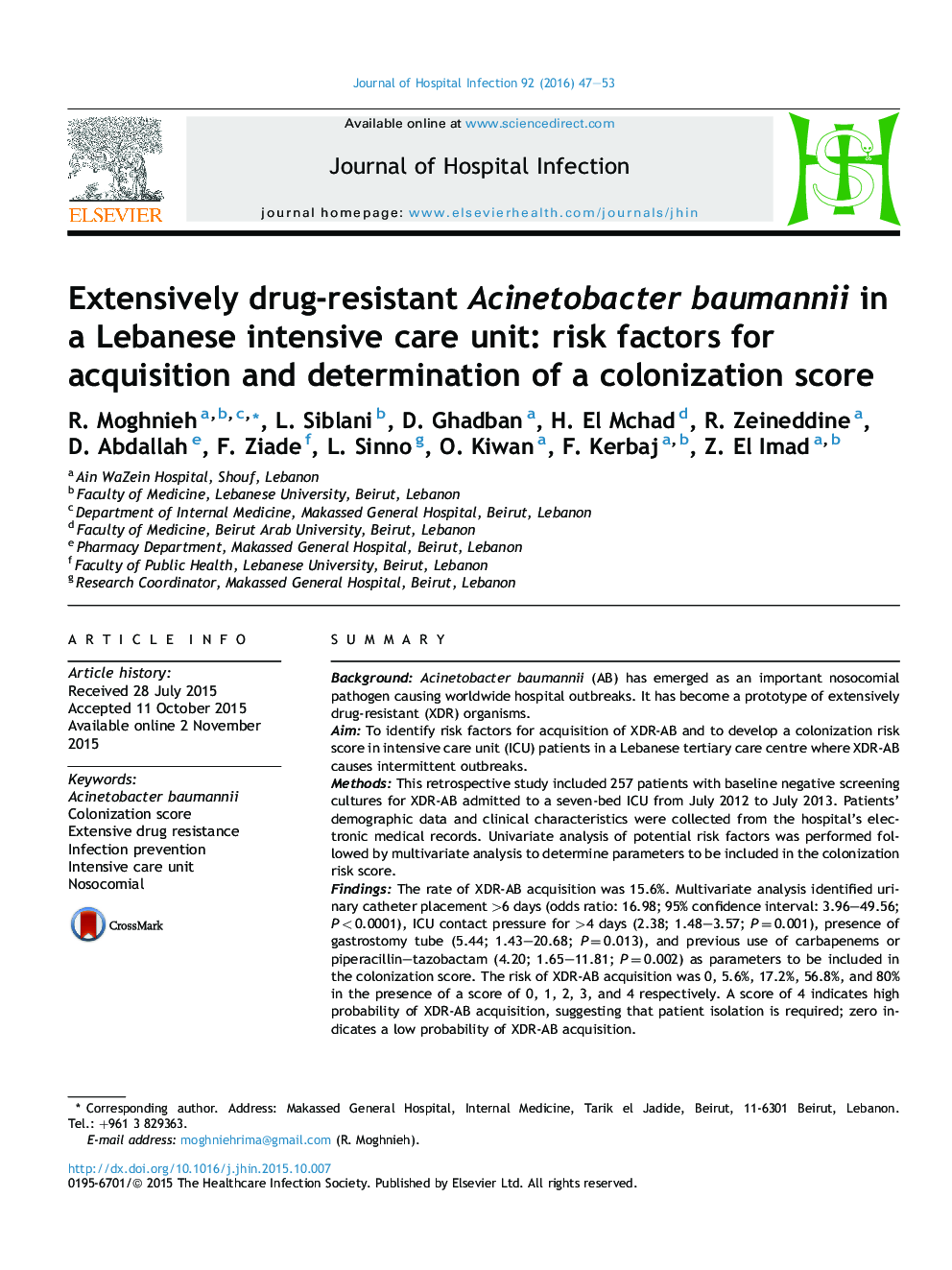| Article ID | Journal | Published Year | Pages | File Type |
|---|---|---|---|---|
| 3371423 | Journal of Hospital Infection | 2016 | 7 Pages |
SummaryBackgroundAcinetobacter baumannii (AB) has emerged as an important nosocomial pathogen causing worldwide hospital outbreaks. It has become a prototype of extensively drug-resistant (XDR) organisms.AimTo identify risk factors for acquisition of XDR-AB and to develop a colonization risk score in intensive care unit (ICU) patients in a Lebanese tertiary care centre where XDR-AB causes intermittent outbreaks.MethodsThis retrospective study included 257 patients with baseline negative screening cultures for XDR-AB admitted to a seven-bed ICU from July 2012 to July 2013. Patients' demographic data and clinical characteristics were collected from the hospital's electronic medical records. Univariate analysis of potential risk factors was performed followed by multivariate analysis to determine parameters to be included in the colonization risk score.FindingsThe rate of XDR-AB acquisition was 15.6%. Multivariate analysis identified urinary catheter placement >6 days (odds ratio: 16.98; 95% confidence interval: 3.96–49.56; P < 0.0001), ICU contact pressure for >4 days (2.38; 1.48–3.57; P = 0.001), presence of gastrostomy tube (5.44; 1.43–20.68; P = 0.013), and previous use of carbapenems or piperacillin–tazobactam (4.20; 1.65–11.81; P = 0.002) as parameters to be included in the colonization score. The risk of XDR-AB acquisition was 0, 5.6%, 17.2%, 56.8%, and 80% in the presence of a score of 0, 1, 2, 3, and 4 respectively. A score of 4 indicates high probability of XDR-AB acquisition, suggesting that patient isolation is required; zero indicates a low probability of XDR-AB acquisition.ConclusionRisk factors could be used to develop a score to decide which patients need isolation to limit the spread of XDR-AB.
